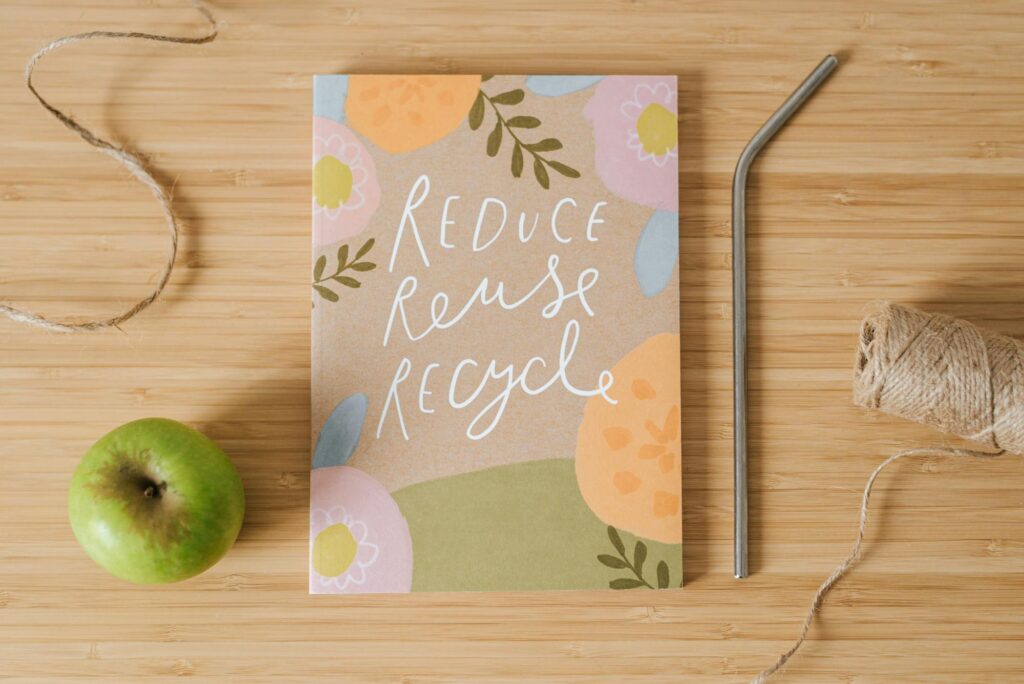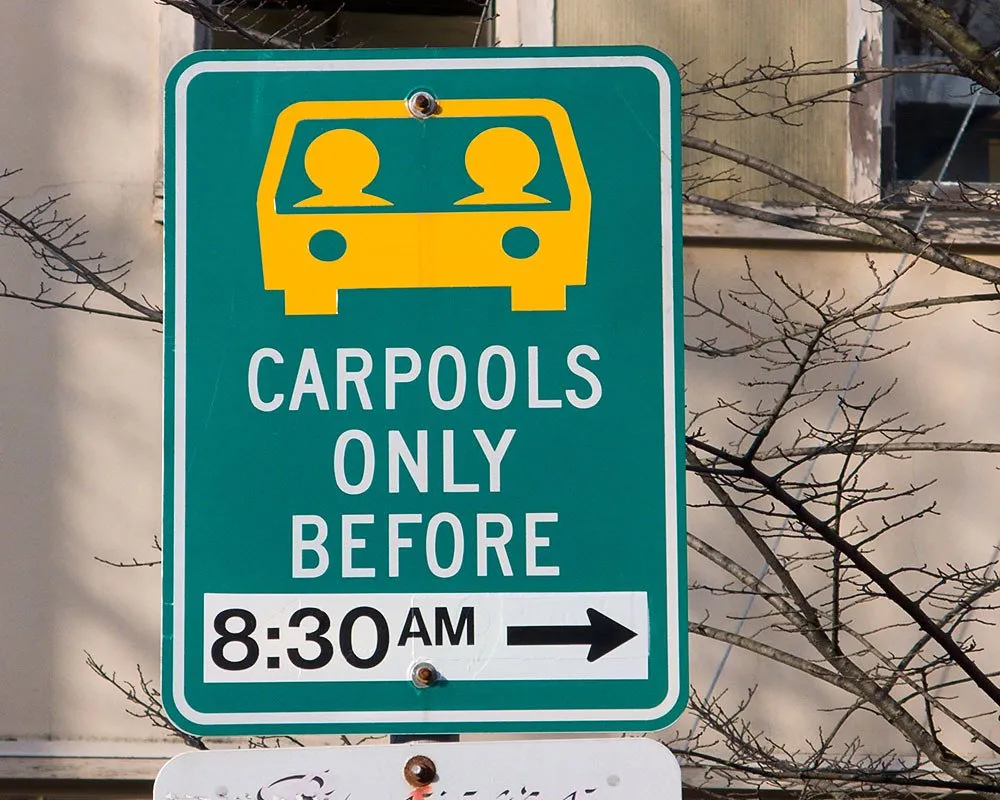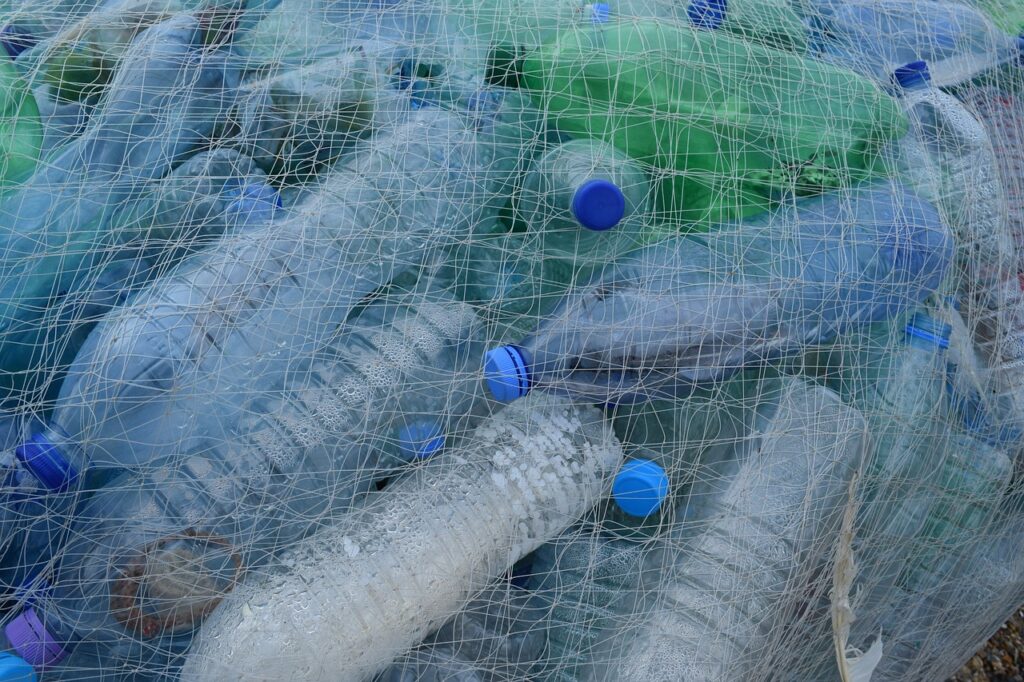Living sustainably doesn’t mean turning your life upside down—it’s about making practical, thoughtful changes that benefit both the planet and your well-being. In 2025, sustainability will be more accessible than ever, with new tools, technology, and community initiatives helping people reduce waste, save energy, and live more consciously.
Whether you’re just starting your eco-journey or looking to fine-tune your habits, this guide offers 10 realistic and impactful steps to make sustainability part of your daily life. From saving water to rethinking how you shop and eat, each tip comes with detailed, actionable advice to help you create lasting change.

Our 10 Steps to a Sustainable Lifestyle
Let’s dive into how to live a more sustainable lifestyle—one small step at a time.
1. Reduce, Reuse, Recycle
It may sound simple, but the classic trio of “reduce, reuse, recycle” is more relevant than ever in today’s high-consumption world. The key is to prioritize reducing and reusing before recycling, which should be the last resort, not the first option.
Here’s how you can practice the three R’s more effectively:
- Reduce: Start by becoming more intentional about your consumption. Ask yourself, “Do I need this?” before purchasing. Choose quality over quantity, and opt for items designed to last, like stainless steel containers or durable bamboo kitchenware.
- Reuse: Give items a second life instead of tossing them. Repurpose glass jars for storage, donate or upcycle old clothes and furniture, and use refillable containers for groceries, personal care, and cleaning supplies.
- Recycle Smarter: Know what’s recyclable in your area (it varies by region!).. Clean containers before tossing them in the bin. Avoid wish-cycling (putting non-recyclables in the hope they’ll be recycled), and look for drop-off spots for tricky items like batteries or electronics.
You can also go beyond the basics by supporting circular economy brands, participating in local repair cafés, and teaching kids how to make reuse fun.
2. Conserve Water
Water is a precious resource, and using it wisely at home is one of the easiest ways to live more sustainably. Even if you don’t live in a drought-prone area, reducing water use lessens the strain on municipal systems and protects natural ecosystems.
Here are some ways to conserve water every day:
- Fix leaks immediately—a single dripping faucet can waste over 3,000 gallons of water annually.
- Install low-flow fixtures like showerheads, faucets, and toilets. Many models offer excellent performance using 30%–50% less water.
- Switch up your habits: Turn off the tap while brushing your teeth, shave using a small water bowl, and wash produce in a bowl rather than under running water.
- Collect rainwater in barrels or buckets to water your garden and outdoor plants. It’s free, clean, and better for your soil than treated tap water.
- Run full loads in your dishwasher and washing machine. This conserves water and energy.
If you have a yard, consider landscaping with native plants that require less irrigation or switching to xeriscaping techniques that drastically reduce outdoor water use.

3. Save Energy
Saving energy isn’t just good for the planet—it’s good for your wallet. Home energy use accounts for a significant portion of greenhouse gas emissions, and small changes in your routine can significantly reduce emissions and utility bills.
Start with these smart upgrades and daily habits:
- Unplug devices when not in use or use smart power strips to eliminate “phantom load” (the electricity devices consume even when turned off).
- If you haven’t already, switch to LED lighting. LEDs use up to 90% less energy and last much longer.
- Install a smart thermostat that adjusts your heating and cooling based on your schedule and preferences. It can reduce energy use by up to 20% annually.
- Seal air leaks and add insulation to prevent energy loss and reduce the strain on your HVAC system.
- Use ceiling fans to improve airflow, allowing you to raise or lower your thermostat without sacrificing comfort.

Save up to 26% per year on HVAC costs. It automatically adjusts the temperature when you’re away.
If you’re ready to level up, consider investing in renewable energy like solar panels or joining a community solar program. Many states offer tax incentives or rebates that make these options more affordable than ever.
4. Choose Sustainable Transportation
Transportation is a major contributor to carbon emissions, but many people have more options than we think. Minor changes to how we get around can significantly impact our environment over time.
Here’s how to get started:
- Walk or bike for short trips. Not only does it cut emissions, but it’s also great for your health.
- Take public transportation whenever possible—it’s far more efficient than individual car travel.
- Carpool or rideshare to reduce the number of cars on the road. Apps make it easier than ever to coordinate rides with coworkers, friends, or neighbors.
- Group your errands to avoid unnecessary trips and keep your vehicle running efficiently.
- Drive smarter: Keep your tires properly inflated, avoid rapid acceleration and braking, and don’t idle your car longer than necessary.
Consider an electric or hybrid vehicle when it comes time to replace your car. Prices are decreasing, charging networks are expanding, and many governments offer rebates or tax credits to help offset the cost.

5. Eat a Plant-Based Diet
The way we eat has a significant impact on the planet. Animal agriculture is one of the most significant contributors to greenhouse gas emissions, deforestation, and water pollution. You don’t need to go vegan to make a difference—even small dietary shifts help.
Here’s how to ease into a more sustainable plate:
- Start with one meatless day a week, like “Meatless Monday.” Gradually increase your plant-based meals as you discover new recipes. Live near a Whole Foods? It’s hot bar goes all meatless on Mondays, too!
- Focus on whole, unprocessed foods like beans, grains, vegetables, and fruits. These require fewer resources to produce and are generally healthier too.
- Buy local and seasonal produce to reduce emissions from long-distance transport and support your regional food economy.
- Choose organic or regenerative farming options when available. These methods prioritize soil health and biodiversity.
- Avoid food waste by planning meals, freezing leftovers, and composting scraps when possible.
Food is a daily opportunity to vote with your fork—by making more plant-forward choices, you can reduce your impact without sacrificing flavor or satisfaction.
6. Use Eco-Friendly Products
Every dollar you spend is a vote for the world you want to live in. Supporting sustainable brands and ethical businesses helps shift industries toward greener practices—and makes a real difference beyond your lifestyle choices.
Here’s how to shop with sustainability in mind:
- Look for third-party certifications like USDA Organic, Fair Trade, Forest Stewardship Council (FSC), B Corp, or Climate Neutral. These labels help you identify products made with environmental and social responsibility.
- Buy from local makers and small businesses, prioritizing sustainability over mass production. This reduces shipping emissions and keeps money in your community.
- Choose quality over quantity. Fast fashion and cheaply made goods may be inexpensive up front, but they often end up in landfills quickly. Invest in products that last.
- Be mindful of packaging. Opt for items with compostable, recyclable, or minimal packaging, and support brands using refill systems or zero-waste models.
- Do your homework before making large purchases. Check company sustainability reports, read customer reviews, and see how transparent a brand is about its supply chain and environmental goals.
By aligning your spending with your values, you’re not just making better choices—you’re helping shape a more sustainable marketplace

7. Minimize Single-Use Plastics
Single-use plastics are everywhere—from takeout containers to packaging to everyday items like straws and cutlery. Unfortunately, these items haven’t been recycled and have polluted our oceans and ecosystems for centuries.
Here are some swaps and strategies to cut down on plastic:
- Bring your own: When you’re on the go, carry a reusable water bottle, coffee cup, grocery bags, and utensils.
- Buy in bulk: Shopping in bulk reduces packaging waste. Bring your jars or bags to refill grains, nuts, spices, and other dry goods at participating stores.
- Switch to bar soap or refillable cleaning products and shampoos instead of liquid options in plastic bottles.
- Avoid plastic wrap and sandwich bags—reusable beeswax wraps, silicone bags, and glass containers are great alternatives.
- Say no to freebies: Politely decline plastic straws, condiment packets, or unnecessary packaging when ordering takeout or delivery.

These colorful, sizeable reusable grocery bags can hold over 50 pounds and come in a pack of ten.
You don’t have to eliminate all plastic overnight. But by building new habits and being more aware of your choices, you’ll significantly reduce your plastic footprint.
8. Practice Sustainable Landscaping and Gardening
If you have a yard, patio, or balcony, you can create a more eco-friendly outdoor space that supports biodiversity, reduces emissions, and even helps your local ecosystem thrive.
Start by rethinking how you use outdoor space:
- Plant native species that are adapted to your region’s climate. They require less water, fertilizer, and maintenance.
- Avoid synthetic pesticides and herbicides, which can harm pollinators and contaminate local waterways. Natural pest control methods and organic fertilizers are better for the soil and your health.
- Compost yard waste and kitchen scraps to create nutrient-rich soil. You’ll reduce your landfill contributions and help your garden flourish.
- Collect rainwater in barrels or cisterns to water your plants. It’s free and often better than tap water for soil health.
- Create pollinator-friendly habitats with flowering plants, bee hotels, or butterfly gardens. This supports essential insects that help grow our food.
Even a small urban garden or container garden on a balcony can have a positive environmental impact and reconnect you with the rhythms of nature.

9. Practice Mindful Consumption
In a culture driven by convenience and instant gratification, it’s easy to accumulate stuff we don’t truly need. Practicing mindful consumption means being intentional about what you bring into your home—and what you let go of.
Here’s how to shift toward a more intentional lifestyle:
- Pause before purchasing: Ask yourself, “Will I still use or love this item a year from now?” or “Can I borrow or repair instead of buying new?”
- Declutter responsibly by donating or selling gently used items instead of sending them to landfills.
- Create a ‘buy list’ of items you want or need. Wait a few days or weeks before purchasing—you may not like them.
- Invest in versatility: Choose items that serve multiple purposes, like convertible furniture, capsule wardrobes, or multi-use kitchen tools.
- Unsubscribe from marketing emails that trigger impulse shopping and focus instead on brands you trust and value.
By slowing down your consumption, you save money, reduce waste, and create space for the things that truly matter.
10. Support Sustainable Businesses and Organizations
The most powerful changes happen when people come together. While personal sustainability efforts are essential, they’re even more impactful when they ripple into your community.
Here’s how to make your journey contagious:
- Start conversations with friends, family, and coworkers. Share tips, struggles, and successes—it helps normalize sustainable living.
- Use social media to spotlight the changes you’re making, the products you love, or the local initiatives you’re involved in. You might inspire someone who’s been on the fence.
- Host a clothing swap, neighborhood cleanup, or sustainability workshop. These small gatherings build community and spread awareness.
- You can support policy change by signing petitions, attending city council meetings, or voting for leaders who prioritize the environment.
- Encourage your workplace or school to adopt greener practices, from recycling programs to energy-efficient lighting.
When others see sustainability as achievable, rewarding, and fun, they’re more likely to join in. Your example can create a ripple effect that goes far beyond your actions.
Small Steps, Big Impact
Living a sustainable lifestyle in 2025 doesn’t mean doing everything perfectly—it’s about doing what you can, where you are, with the resources available. Every small choice, from bringing your bag to switching off unused lights, adds up over time. And as you take steps to reduce waste, conserve energy, and live more mindfully, you’ll likely notice another benefit: a deeper connection to your community, environment, and well-being.
Remember, sustainability is a journey, not a destination. Whether you’re just starting or deepening your existing habits, keep learning, stay curious, and celebrate your progress. Because when we all do a little, we achieve a lot.





